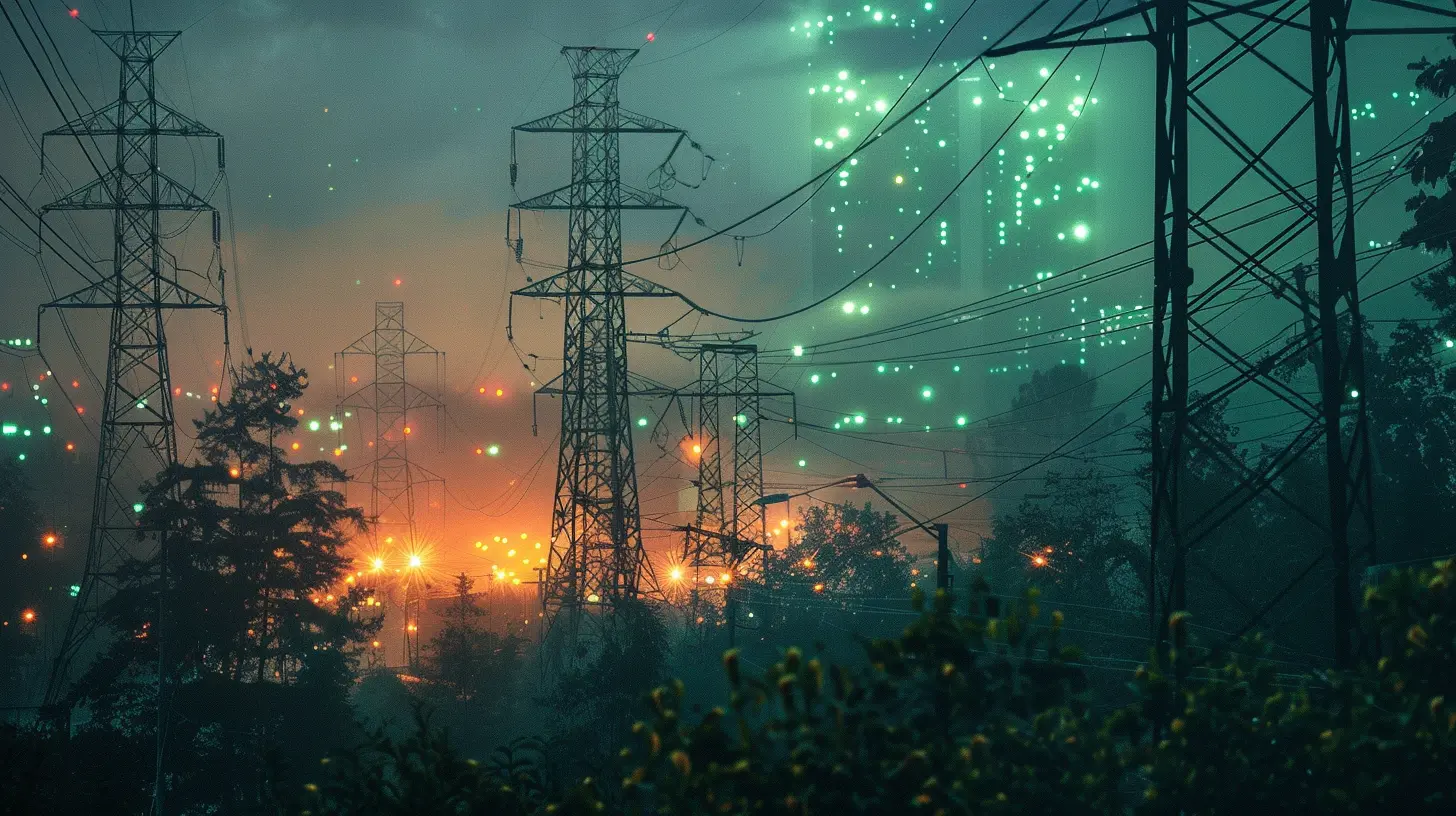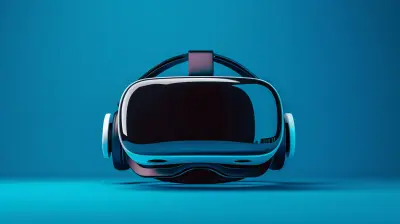The Smart Grid: Combining AI and Green Energy for a Sustainable Future
10 October 2025
Introduction
Imagine a world where electricity is always available when you need it, where power outages are rare, and where energy waste is almost nonexistent. Sounds like a dream, right? Well, thanks to the power of Artificial Intelligence (AI) and renewable energy, we’re closer than ever to making this a reality.
The smart grid is revolutionizing the way we generate, distribute, and consume electricity. By integrating AI and green energy, we’re not only making the power grid more efficient but also taking significant steps toward a sustainable future. Let’s dive into how this incredible technology is shaping the energy landscape.

What is a Smart Grid?
A smart grid is an advanced electricity network that uses digital technology to optimize energy distribution. Unlike traditional grids, which rely on a one-way flow of electricity, smart grids use sensors, automation, and AI to create a two-way communication system.Think of it like upgrading from an old flip phone to the latest smartphone. Traditional grids are outdated, inefficient, and unable to adapt to modern energy challenges. Smart grids, on the other hand, are intelligent, flexible, and capable of maximizing renewable energy sources like solar and wind.

How AI is Revolutionizing the Smart Grid
AI is the brain behind the smart grid, making real-time decisions that improve efficiency and reduce waste. But how exactly does AI enhance the power grid?1. Predictive Maintenance: Preventing Outages Before They Happen
One of the biggest headaches in power management is equipment failure. Traditional grids often rely on reactive maintenance—fixing things only after they break. AI changes the game by analyzing data from sensors and predicting when parts of the grid will need repairs.This predictive maintenance helps prevent blackouts, reduces costs, and ensures that power is always available when needed. Imagine a doctor diagnosing an illness before symptoms even appear—that’s what AI does for the grid.
2. Demand Forecasting: Matching Supply with Demand
Ever wonder why your electricity bill fluctuates? That’s because power consumption isn’t constant. AI analyzes historical data, weather patterns, and real-time demand to predict energy consumption accurately.By forecasting demand, the smart grid can adjust its power generation accordingly, reducing energy waste and lowering costs. It’s like a smart thermostat that knows when to turn the heat up or down based on your habits.
3. Grid Optimization: Making Energy Flow Smarter
Traditional grids aren’t great at handling fluctuations in power supply, especially when integrating renewable energy sources. AI helps optimize power flow by automatically balancing demand and supply.For example, if a cloud passes over a solar farm, AI can instantly redirect energy from other sources to maintain a steady power supply. This ensures a stable grid while maximizing the use of green energy.
4. Enhancing Cybersecurity: Protecting the Grid from Attacks
With increased digitization comes the risk of cyber threats. AI-powered smart grids continuously monitor for unusual activities, detecting and responding to potential cyberattacks in real time.Think of AI as a 24/7 security guard for the electricity network, ensuring that hackers can’t disrupt power supplies.

The Role of Green Energy in Smart Grids
A smart grid without renewable energy is like a sports car without fuel—it can’t reach its full potential. Here’s how green energy plays a crucial role in the smart grid revolution.1. Integrating Solar and Wind Energy
Renewable energy sources like solar and wind are clean and abundant, but their biggest challenge is inconsistency. The sun doesn’t always shine, and the wind doesn’t always blow. Smart grids, powered by AI, address this issue by efficiently storing and redistributing energy when needed.For instance, during sunny days, excess solar power can be stored in batteries and used later when demand is high. This ensures a steady energy supply without relying on fossil fuels.
2. Decentralized Energy Production
Traditional power grids are highly centralized, relying on a few large power plants to supply electricity. Smart grids enable decentralized energy production, where homes and businesses generate power through solar panels and contribute excess energy back to the grid.This peer-to-peer energy exchange creates a more resilient system, reducing reliance on large power plants and making energy more accessible to everyone.
3. Reducing Carbon Footprint
By integrating renewable energy sources and optimizing power distribution, smart grids play a critical role in reducing greenhouse gas emissions. Less reliance on fossil fuels means a cleaner environment and a healthier planet for future generations.
Benefits of Smart Grids for Consumers
A smart grid isn’t just beneficial for energy companies—it directly impacts consumers in a big way.1. Lower Electricity Bills
Since AI optimizes energy usage and reduces waste, consumers can expect lower electricity costs. Smart grids enable real-time pricing, meaning you can adjust your power consumption based on the cheapest rates available.2. Fewer Power Outages
With predictive maintenance and real-time monitoring, smart grids significantly reduce the chances of power outages. This means fewer disruptions, whether you’re working from home, streaming your favorite show, or charging your electric vehicle.3. Greater Control Over Energy Usage
Smart meters and AI-powered apps allow users to monitor their electricity consumption in real time. You can track how much energy you’re using and make informed decisions to reduce waste.4. Cleaner, Greener Living
By supporting renewable energy and reducing carbon emissions, smart grids contribute to a more sustainable lifestyle. Every kilowatt saved is a step toward a cleaner planet.The Future of Smart Grids
The smart grid is still evolving, but one thing is clear—it’s the future of energy. As AI technology advances and renewable energy becomes more widespread, we can expect even greater efficiency, reliability, and sustainability.Key Trends to Watch:
- AI-Powered Energy Trading: Smart grids will enable real-time buying and selling of electricity through blockchain technology, creating a decentralized energy market.- Next-Gen Battery Storage: Advancements in battery technology will allow for better energy storage, ensuring a constant power supply even during low production periods.
- Wider Adoption of Electric Vehicles (EVs): Smart grids will play a crucial role in managing EV charging, preventing strain on the grid while promoting clean transportation.
- Self-Healing Grids: Future grids will use AI to detect and fix faults automatically, minimizing outages and improving resilience.
Conclusion
The combination of AI and green energy is transforming the way we produce and consume electricity. The smart grid is more than just an upgrade—it’s a revolution that ensures a sustainable, efficient, and reliable energy future.By embracing this technology, we’re not only improving our daily lives but also taking a giant leap toward combating climate change. The future is smart, sustainable, and powered by innovation. Are you ready to be part of it?
all images in this post were generated using AI tools
Category:
Green TechnologyAuthor:

Michael Robinson
Discussion
rate this article
1 comments
Juniper Jimenez
Finally, a smart grid that won't disconnect me for using my toaster while binge-watching cat videos! Combining AI and green energy sounds like the ultimate power couple—let’s just hope they don’t end up in a dramatic, energy-sucking breakup!
October 12, 2025 at 11:25 AM


